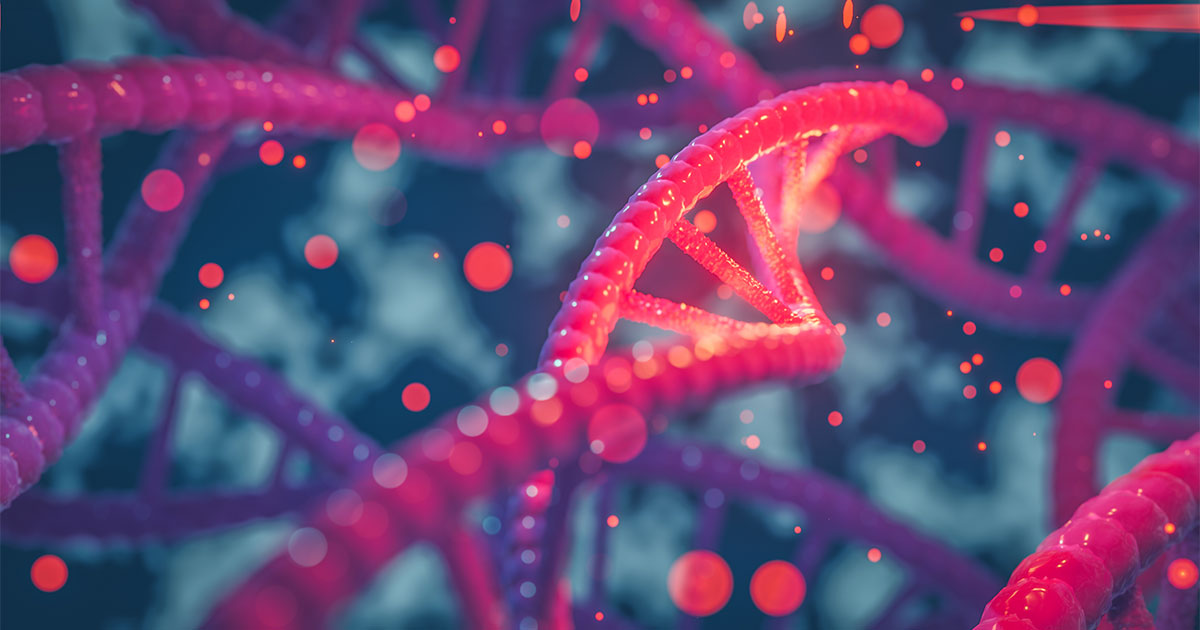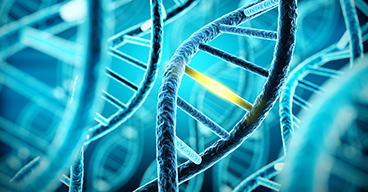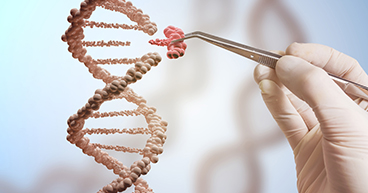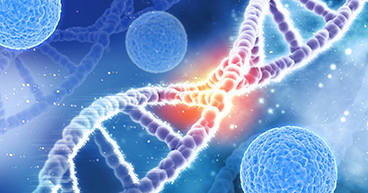
When the U.S. Food and Drug Administration (FDA) approved the drug imatinib (Gleevec®) 20 years ago to treat leukemia, it was a game changer in cancer treatment. Considered the first targeted therapy drug, imatinib was designed to target a specific chromosomal anomaly that may lead to chronic myeloid leukemia. Since then, researchers have identified many more targets, allowing scientists to develop drugs to attack more cancer-related gene mutations. Targeted therapy has become a critical tool in the fight against cancer and may also be used to treat other conditions.
But for all the advancements in targeted therapy, some targets remain elusive—among them, genes in the troublesome RAS family. These genes, including HRAS, NRAS and especially KRAS, are common mutations found in many cancers. Scientists have known for decades about the role KRAS and other RAS genes play in cancer growth, but they haven’t been able to develop a drug to target it.
Until now.
KRAS inhibitor approved
On May 28, the FDA granted accelerated approval to the drug sotorasib (Lumakras™) to treat patients with locally advanced or metastatic non-small cell lung cancers that contain the KRAS mutation with a G12C variant. While that sounds very specific and narrow in scope, it marks the first drug in history approved to treat cancer with any kind of RAS mutation, and its approval was hailed as groundbreaking by researchers in the cancer community.
“It’s a big breakthrough in the whole field,” Frank McCormick, Ph.D., told the National Cancer Institute’s (NCI) Cancer Currents blog. Dr. McCormick is a consultant for NCI’s RAS Initiative, a hub for research into RAS gene mutations in cancers.
In a clinical trial, treatment with sotorasib “led to a durable clinical benefit” in 37 percent of non-small cell lung cancer patients in a phase II clinical trial. In four cases, patients showed a “complete response” to the treatment, researchers said, meaning scans showed no evidence of disease after treatment. Side effects of the drug include diarrhea, nausea and muscle or bone pain.
In addition to sotorasib, the FDA approved two new tests designed to detect G12C in blood or tissue samples taken from patients with KRAS-mutated lung cancer. KRAS mutations with G12C variants are found in about 13 percent of non-small cell lung cancer patients.
“This is an advance toward targeting a very difficult mutation,” says Bruce Gershenhorn, DO, Medical Oncologist at Cancer Treatment Centers of America® (CTCA), Chicago, and Lung Cancer Program Director for CTCA®. “But it’s a small step forward.”
What are RAS genes?
RAS, short for rat sarcoma, is a family of genes essential for cell development. There are 36 human genes in the RAS family that help cells grow, survive and differentiate, or determine their role in our anatomy. RAS genes work by transmitting a complex set of signals from receptors on a cell wall to other genes in a cell’s cytoplasm, the substance that surrounds a cell’s nucleus.
RAS family genes are also known to be oncogenes, those that may promote cancer growth when they mutate. Three specific RAS genes—KRAS, HRAS and NRAS—play a significant role in cancer development. According to the NCI, RAS mutations drive the growth in more than 30 percent of all human cancers. For instance:
- KRAS mutations are found in 95 percent of pancreatic cancers, 45 percent of colorectal cancers and 35 percent of lung cancers.
- NRAS mutations are found in 15 percent of melanomas and 15 percent of acute myeloid leukemias.
- HRAS mutations are found in 10 percent of bladder cancers.
Why so hard to treat?
Of all the RAS genes, KRAS is the one that most frequently mutates and is associated with more cancers. Researchers have known of the role KRAS plays in multiple cancers, but decades of research and multiple clinical trials have failed to produce a targeted therapy. To many scientists, KRAS was consider “undruggable.”
Why are KRAS mutations so difficult to target?
Smooth surfaces
Targeted therapy and immunotherapy drugs work by latching on to specific receptors on the surface of cancer cells. Compared to other proteins, KRAS genes have relatively smooth surfaces and have fewer receptors or pockets to latch on to.
Hard to keep up
KRAS genes are aggressive and divide very quickly, regenerating every 24 to 48 hours. So whatever therapy is developed has to be equally aggressive and durable to keep up with their growth.
On and off switch
KRAS genes have the ability to turn themselves on and off by interacting with so-called G proteins that regulate cell signaling. Through a series of cellular workarounds, KRAS can be turned on and reactivated on its own, even after it’s thought to have been shut down.
Metastatic cancer
Cancers with KRAS mutations are believed to have higher rates of metastasis than some other cancers. Metastatic cancers are often difficult to treat and in 90 percent of cases lead to poor outcomes.
More work to be done
While the approval of sotorasib has been hailed as a milestone, it also illustrates how much more needs to be done to better understand the treatment of RAS mutations in cancer.
Sotorasib has been approved to treat only one type of cancer with the very specific KRAS G12C variant. Many other RAS mutations and other variants remain elusive.
And while sotorasib produced results in 37 percent of patients in a clinical trial, that means 63 percent of participants saw no change or worsening of their disease. The FDA’s accelerated approval requires the researchers and the drug manufacturer to continue their research into sotorasib to determine its long-term efficacy.
“This drug does not have the response rate we see in other targeted therapies,” Dr. Gershenhorn says. “Maybe this approval will lead to more effective KRAS-targeted drugs. And perhaps it will open the door to better and more effective therapies that target all RAS-family mutations.”



